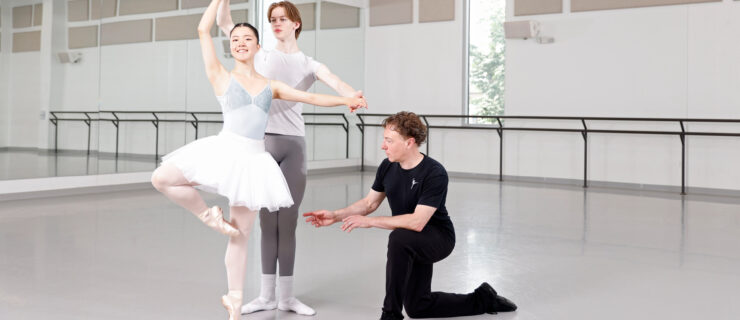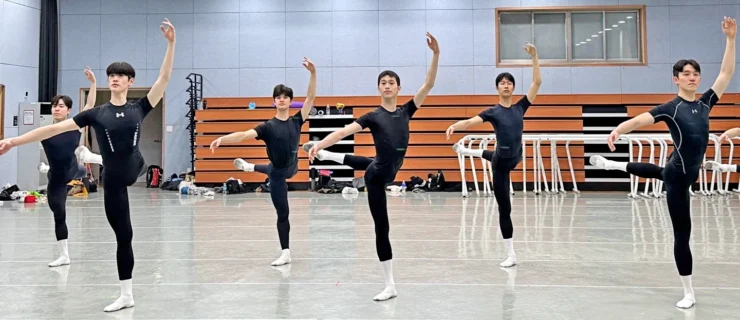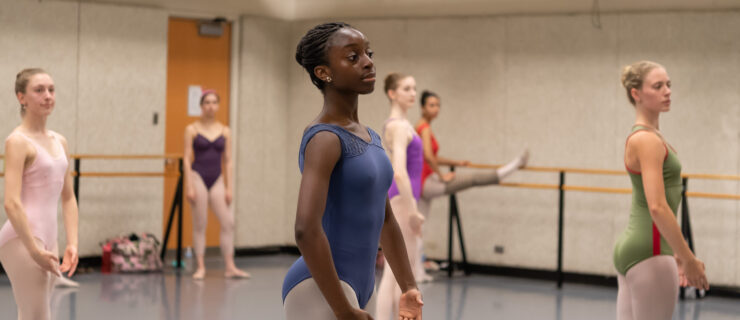Let's Talk Tuition: Three Students Get Candid About Their Training Expenses and Making Ends Meet
As if the road towards a dance career wasn’t demanding enough, the costs associated with intensive pre-professional training also add up quickly. Suddenly, the price tag on becoming a dancer seems like a daunting obstacle that working hard in class can’t overcome. In addition to school tuition (academic as well as dance), there’s the cost of dancewear, shoes, auditions, competition fees and coaching. For those training away from home, housing and living expenses also factor into the overall price. For many students and their families, finding a way to pay for it all takes strategizing and soul-searching.
“It’s challenging to fund your training,” says Philip Neal, artistic director of Next Generation Ballet in Tampa, Florida. There are ways to make it more affordable, he notes, but it can take creative thinking. “Some of our students needed to work part-time to help pay for their training, but restaurant jobs were too physically draining, so they devised jobs requiring only an online presence. I’m proud of their proactive solutions.”
Scholarships, side jobs and even crowdfunding are all good resources for students needing help with finances. But the key is to get a clear picture of what your options are before you enroll in a serious pre-professional program so that you can plan ahead and budget. We profiled three ambitious students in different training programs to find out what they’re paying for and how.
 Abadi in class at School of Oregon Ballet Theatre. Photo by Ruby Mae Lefebvre, Courtesy OBT.
Abadi in class at School of Oregon Ballet Theatre. Photo by Ruby Mae Lefebvre, Courtesy OBT.
Zoe Abadi, 16, School of Oregon Ballet Theatre
Tuition:
About $4,000. Abadi receives a $1,000 need-based scholarship off the regular full tuition of $5,000.
Housing and food:
Abadi lives at home and eats most meals there, but she gets a small allowance of $10–$12 a week from her parents for snacks during long days at the studio or theater.
Shoes:
About $450 a month for pointe shoes, ribbons, elastics and shipping costs. Her Freed Classics run about $80 a pair, and she goes through more during Nutcracker and summer intensives.
Academics:
Abadi switched from a private school to Oregon Connections Academy, an online public school with no tuition, to save money for her ballet training.
Student contribution:
Abadi has a minimum-wage part-time job in a retail store at a local mall, earning her about $60 a week. She’s also turned her photography hobby into a paying gig. “I do audition photos for other students at OBT, or just fun artistic dance shots, and I do senior portraits for yearbooks.” Abadi charges $30 for a two- to three-hour dance shoot, and $15 an hour for school portraits. The income helps her pay for leotards and dance supplies.
She also launched a GoFundMe campaign to fund her summer intensive at the Pacific Northwest Ballet School. “I have a lot of extended family in Asia who don’t know a lot about ballet, but when they read my description and learned about what I do, they decided to support me.” Abadi surpassed her goal of $4,000, which paid for her summer program, with some leftover for the following school year.
 Held with Colin Canavan in Walnut Hill’s “Nutcracker.” Photo by Sabi Varga, Courtesy Walnut Hill.
Held with Colin Canavan in Walnut Hill’s “Nutcracker.” Photo by Sabi Varga, Courtesy Walnut Hill.
Avery Held, 17, Walnut Hill School for the Arts
Tuition, housing and academics:
Walnut Hill School for the Arts, a performing arts high school in Natick, Massachusetts, costs $59,600 annually for boarding students. Held has a partial scholarship that reduces her tuition to $12,660 per academic year, including room, board, academics and dance classes. Depending on which academic courses she takes, textbooks cost an additional $100–$200.
Shoes and supplies:
About $2,500 per year for her Suffolk pointe shoes. Held gets a new set of leotards and tights to adhere to Walnut Hill’s dress code every two years, spending about $250.
Travel expenses:
Walnut Hill’s proximity to Boston makes traveling to summer program auditions relatively inexpensive. Held buys discounted student tickets to take the train or carpools with friends. She estimates audition fees and travel expenses, including visits home to Indiana, totaled about $800 last year. Her parents use a travel rewards credit card to accrue miles, which they use for tickets to fly her home for holidays, as well as to come see her perform at Walnut Hill.
Student contribution:
Held works at the school’s gym for a couple of hours a week, earning minimum wage (about $11 an hour in Massachusetts). She picks up extra shifts if her schedule permits. “I mainly clean the equipment and make sure everyone’s using the machines right, but what’s good is that if not many people are in there, I can get some homework done,” she says. “It’s about $25 a week for spending money here at school, which helps a lot.”
 Yee in Next Generation Ballet’s “Nutcracker.” Photo by Soho Images, Courtesy NGB.
Yee in Next Generation Ballet’s “Nutcracker.” Photo by Soho Images, Courtesy NGB.
Luke Yee, 18, Next Generation Ballet
Tuition:
Yee, a high school graduate, is on a full merit scholarship at the Next Generation Ballet. (Normal tuition costs $4,100.) NGB charges students an all-inclusive fee of $805–$1,060 for the Youth America Grand Prix competition, depending on how many variations they are entering. The fee includes coaching, YAGP’s registration fee and costume rentals.
Housing and food:
Originally from Texas, Yee shares a two-bedroom apartment with two other NGB students, paying $450 a month in rent. He spends about $120 a month on food.
Transportation:
One of Yee’s roommates has a car, so they carpool to the studio and a weekly Walmart shopping run. Instead of paying for a share of the car’s costs, Yee pitches in by doing most of the cooking.
Shoes and supplies:
About $60 a month, mostly for dance shoes and tights.
Student contribution:
Yee receives $200 a month from his parents to cover food and other miscellaneous expenses like haircuts, cleaning supplies, or occasional Uber trips. Yee wanted to help out, so after a stint working at Starbucks proved unsustainable (waking up at 4 am to work a five-hour shift before ballet was too much on his body), he developed an online math tutoring program. “It’s fairly lucrative in terms of the amount of money I could make in relation to the hours,” he explains. “I can tutor from my apartment to anywhere in the U.S.” He charges a minimum of $30 an hour, bringing in around $800 a month. “But around finals time I can nearly double that.”






